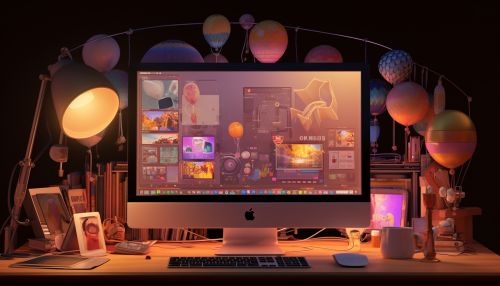Multimedia
Overview
Multimedia refers to the use of different types of media content or media forms such as text, audio, images, animations, video, and interactive content to convey information. It is a broad field that encompasses various technologies and creative disciplines. The term is derived from the words "multi," meaning many, and "media," referring to the mediums through which information is conveyed.
History
The concept of multimedia dates back to the 19th century with the invention of phonographs and motion pictures. However, the term "multimedia" was not coined until the 1960s when businesses began to combine multiple media forms in their presentations and advertisements. The advent of personal computers in the 1980s and the World Wide Web in the 1990s revolutionized multimedia, making it a ubiquitous aspect of modern life.
Types of Multimedia
Multimedia can be categorized into two main types: linear and non-linear. Linear multimedia is a type of multimedia that is designed to be consumed without any navigation control for the viewer such as a cinema presentation. Non-linear multimedia, on the other hand, offers user interactivity to control the progress of the content, like video games or self-paced computer-based training.
Components of Multimedia
Multimedia typically combines five major media types:
1. Text: This is the most common media type, used to express information in a detailed and contextual manner. 2. Audio: This includes spoken words, music, and sound effects. Audio is used to enhance the user experience by providing auditory information or feedback. 3. Images: These include photographs, drawings, diagrams, and graphs. Images are used to illustrate concepts, provide visual interest, or convey information graphically. 4. Animation: This includes moving images or animations. They are used to demonstrate processes, tell stories, or provide visual interest. 5. Video: This includes moving images with audio. Videos are used to demonstrate processes, tell stories, or provide a rich sensory experience.


Applications of Multimedia
Multimedia has a wide range of applications across various fields:
1. Education: Multimedia is used in education to enhance learning and teaching. Interactive multimedia applications like educational games, simulations, and virtual labs promote active learning. 2. Entertainment: Multimedia technologies are extensively used in the entertainment industry, including films, music, and video games. 3. Advertising: Multimedia is used in advertising to create engaging promotional content. This includes online ads, TV commercials, and digital billboards. 4. Journalism: Multimedia journalism combines text, audio, video, and graphics to tell stories in a more engaging way. 5. Healthcare: In healthcare, multimedia applications are used for training, simulations, patient education, and telemedicine.
Future of Multimedia
The future of multimedia is likely to be driven by advancements in technology, including AI, VR, AR, and 5G networks. These technologies promise to deliver more immersive and interactive multimedia experiences.
